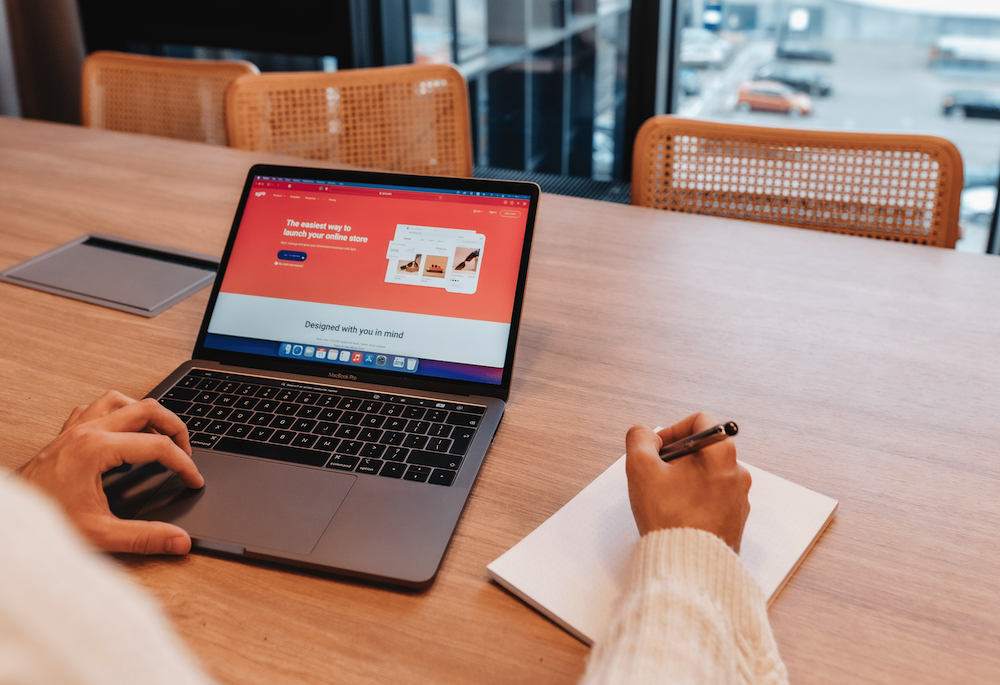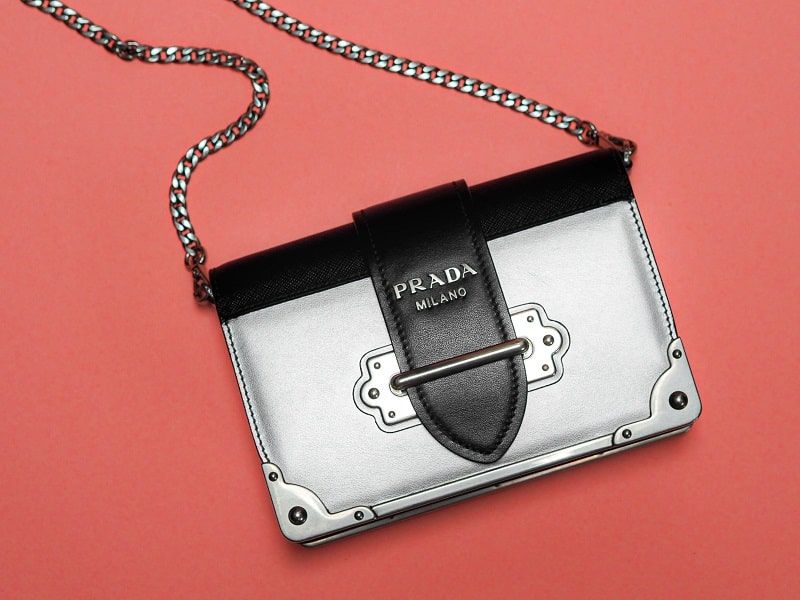
Dropshipping
+1
80+ eCommerce Terms for Dropshipping Beginners
If you’re planning on starting a dropshipping business, it’s important to stay up to date with the latest terminology and...
What is B2B2C Fashion eCommerce?
eCommerce

Did you know that online fashion businesses tend to frequently get into collaborations with one another? This is because by joining their forces, they can hit their goals more easily and effectively. In addition, by working together, they can also enjoy many more benefits in comparison when doing the job independently.
In the eCommerce world, you’ll often come across such companies that depend on each other since it helps them to increase their online sales and generate larger profits. This is known as B2B2C eCommerce where two companies get into a partnership in order for their businesses to continue growing faster and experience greater productivity. You can learn more about this cooperation in this dropshipping case study.
But you may still wonder what does exactly this model involve and what does it take to make such cooperation happen? In the following sections we’ll go through all the questions you’re probably eager to know the answers to and supply you with detailed information that’ll clear up any confusion you might be facing with.
We’ll get into the meaning of the B2B2C model, look through the differences between this type of business and the B2B and B2C models, unfold the advantages of B2B2C eCommerce, and delve into an example of what a B2B2C business looks like.
The B2B2C model is an eCommerce term for business-to-business-to-consumer and refers to the work relationship between two businesses that collaborate in order to provide end-users with certain products or services. In more simplistic terms, B2B2C basically represents a mix of two other eCommerce models, B2B and B2C. To keep things as clear as possible, let’s “dissect” the B2B2C model:
Here’s how it functions: the B2B company supplies the B2C company with merchandise which will be sold to the consumers of the B2C business.
In fact, in the eCommerce world, B2B2C mostly refers to one of the most popular business models today, namely dropshipping which we’ll focus on in this article. Working as a dropshipper requires cooperating with a B2B business that’ll provide your store with the goods you’re planning to offer to your customers. To make it more clear, in fashion eCommerce, in order to successfully launch an online clothing boutique, you’ll have to hire a supplier that’ll be able to stock your virtual store with apparel pieces. The delivery and order fulfillment process are the responsibilities of the dropshipping supplier, while the advertising part, the implementation of marketing ideas, and the customer interaction are handled by you.
To sum things up, B2B2C can be defined as an interdependent business model where, by teaming up, two companies have the opportunity to work towards reaching their goals and producing their target revenue.

People tend to frequently mix up these business models with one another. However, in case of planning to start your own company, it’s important to clearly differentiate between them. Even though we did mention a few things about them in the section above, in this paragraph we’ll provide you with a more in-depth explanation so that you never again feel confused about how each model operates.
The B2B (business-to-business) model can be described as a business agreement between two companies where one of them provides the other one with goods and services. These are then sold to consumers. An alternative explanation would be a relationship between a wholesaler and a store owner, for example.
The B2C (business-to-customer) model involves interacting directly with end-users by selling them products. Companies working with this model can be observed on a daily basis: from clothing stores and supermarket chains to internet services such as Netflix and Spotify.
In comparison to B2B and B2C, as previously stated, the B2B2C eCommerce model calls for a company (B2C) that offers its products to end customers which is made possible by partnering up with another business that acts as the supplier (B2B).
Since we’ve already acquainted you with the B2B2C model and have drawn a clear line between this one and the B2B and B2C business arrangements, it’s time to familiarize you with the things a B2B2C-based company can offer you, especially one operating on the dropshipping method, and introduce you the benefits you could enjoy if you ever opt out to run an online B2B2C fashion store.
First things first, when launching an eCommerce fashion dropshipping store by following the B2B2C model, just like when running a B2C business, you’re given the complete freedom to interact with end customers and make sure they’re satisfied with your services. There are many different ways you can approach them one of the most common ones being through social channels. With over 4 billion social media users detected in 2022, by promoting your products through Facebook posts, YouTube ads, and Instagram stories, for example, you’ll be exposed to the possibility of reaching a large number of consumers.
Furthermore, with the B2B2C dropshipping model in place, you’ll be able to acquire consumer data such as e-mail addresses, gender, age, product interests, online reviews, etc. Having access to this type of information, you can adjust your communication approach, making it more personalized with the intention of establishing a closer relationship with your consumers.
Running a B2B2C-based eCommerce clothing business will also allow you to significantly reduce company expenses. To illustrate, in dropshipping, for instance, costly processes, such as product shipping, are taken care of by the B2B supplier, which makes it possible for your fashion store to avoid incurring large payments.
In this manner, your apparel dropshipping store that happens to follow the B2B2C eCommerce model doesn’t need to carry the burden of covering delivery services. Instead, you can spend that money on something that would bring your business a rise in dropshipping sales, like for example investing in social media advertising.
Last but not least, having an eCommerce B2B2C boutique can give you amazing flexibility. If you choose to follow the dropshipping model, it will allow you to not only do the job remotely but also organize your working hours around your daily schedule. The ability to operate from anywhere in the world will bring you the opportunity to multitask, save up on time, complete your tasks faster and more efficiently, and most importantly, keep a good work-life balance.
To give you a more illustrative example, we present you with BrandsGateway, a company that operates as a B2B2C fashion business. However, in order to understand which role does BrandsGateway play in the B2B2C eCommerce, let’s once again take a look at the word dissection we did earlier:
B+B+C = Supplier + dropshipper + customer
BrandsGateway works as a supplier, aka the first B in the B2B2C model. This means that this company provides entrepreneurs, aka the second B, who are planning to launch an online dropshipping business with the merchandise they can sell in their stores. Once customers have made a purchase in that store, the order is forwarded to BrandsGateway which delivers the products directly to the consumers.
As a fashion supplier of high-end apparel products, BrandsGateway supplies boutiques with product categories covering all kinds of apparel and accessories items including luxury clothing, luxury accessories, luxury bags, luxury shoes, and more. All products from the categories mentioned in the list above are 100% authentic designer items produced by globally acclaimed fashion brands such as Dolce & Gabbana, Jimmy Choo, Prada, Michael Kors, Cavalli, Armani, Gucci, and many more.

To begin dropshipping with BrandsGateway, you’ll have to follow a few simple steps starting with signing up on their website and selecting from their three dropshipping subscription packages. After that has been taken care of, you’ll be provided with their plugin solution and a detailed guide containing instructions on how to install it into your store. Once that’s finished, you’ll be able to start importing all their fashion items.
B2B2C fashion eCommerce is a popular business many companies choose to follow. The information we’ve supplied you with offers you an elaborate description of what this model involves and helpful details on how it functions. Moreover, since it represents a combination of two other business types, B2B and B2C, we’ve presented you with the characteristics of these models as well with the intention of providing you with a clearer understanding of how they operate both together and separately.
Additionally, you were introduced to a company that offers B2B2C services with the purpose of giving you a more illustrative example. Having been furnished with these facts, you can now give the B2B2C model a go and launch the fashion business of your dreams.
For additional information, you can always check out these eCommerce business statistics.
What is dropshipping?